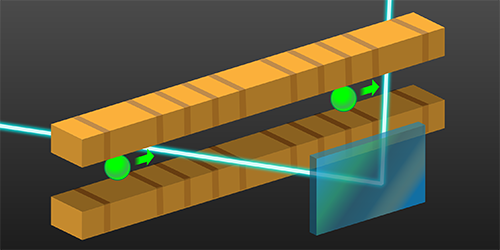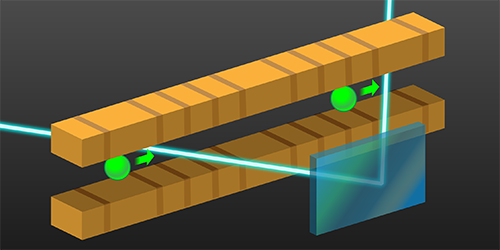Drive-Thru Quantum Gate
Trapped ions are promising qubit candidates. However, for standard gate techniques, a major problem is generating identical gate operations for ions at different locations in a larger trap array. Researchers have now demonstrated a possible solution: use the “mobility” of the ions to pass them through a static laser beam that acts as a logic gate. By reflecting the laser beam with mirrors, the team simultaneously performed chosen gate operations on two trapped ions.
The common method for manipulating an ion-based qubit is to fire a precisely shaped laser pulse at it. But to perform the same operation on a separate ion requires firing another pulse down a different light path, which will likely distort the pulse’s shape in undesired ways. To avoid this problem, researchers previously proposed transport-based quantum logic gates, in which the laser beams instead remain static and the ions are moved and directed through the beams using electric fields.
Jonathan Home and his colleagues from the Swiss Federal Institute of Technology (ETH) in Zurich have succeeded in creating the first transport quantum logic gate. Their experiment utilized beryllium ions, held in a one-dimensional trap consisting of 30 electrodes. By manipulating the electrode voltages, the team steered the motion of ions along the trap axis. A laser beam crossing the ion path performed well-defined “rotations” on ions as they passed through the beam. The team showed that they could perform a parallel operation on a second ion by reflecting the gate beam so that it re-crossed the trap at a different location. The researchers measured the final states of their ions and found that the transport gates performed as well as traditional pulse-based gates.
This research is published in Physical Review Letters.
–Michael Schirber





